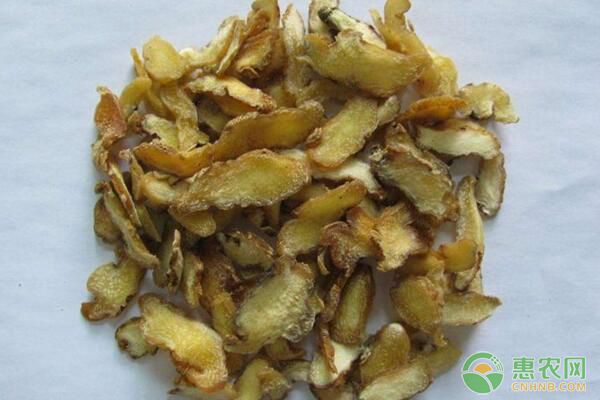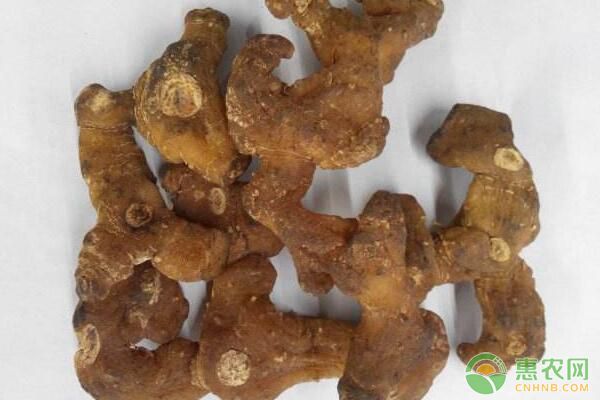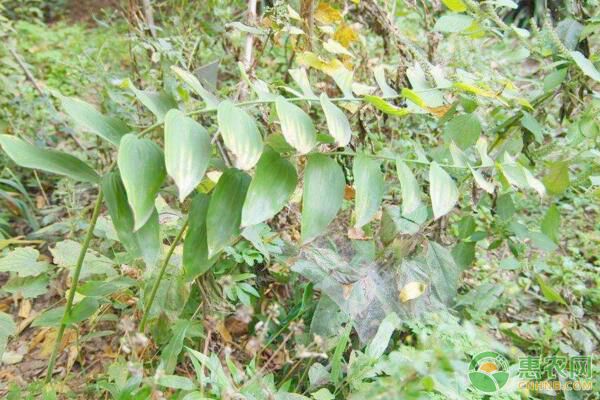Reproduction methods and cultivation points of Rhizoma Polygonati
How to cultivate the rhizome of Rhizoma Polygonati? Among the many Chinese herbal medicines, Huang Jing is one of the more common and high market demand. Previously, Huinong.com has popularized a variety of Huangjing cultivation models for everyone. Today, we will learn the rhizome propagation and cultivation techniques of Rhizoma Polygonati.

1 Ecological characteristics
The rhizome of Rhizoma Polygonati is cylindrical, erect, slightly curved, yellowish white, with round nodules in the form of beads, with few roots. Huang Jing has strong adaptability to growth and is born in the sunny slopes, bushes or open areas under the forest. It is cold-tolerant and humid, and can be cultivated everywhere in the Northeast. The method of changing yellow essence from cultivation to cultivation can be carried out by both seed propagation and rhizome propagation. At present, rhizome propagation is often used in the large-scale production of Huangjing artificial planting.
2 rhizome selection and reproduction
After the part of the ground is withered in late autumn in October, the rhizome of the plant that is robust and disease-free is excavated from 1 to 2a. The length of the rhizome is 8 to 10 cm. It is buried in wet fine soil or fine sand for wintering, the second year of March. The rhizome with clear and well-developed apical buds was selected and cut into 2 segments, each segment with 2 to 3 knots, and cut into 4 to 5 cm long segments. Immediately after the incision is dried and collected, or planted with carbendazim solution 1:800 for about 45 minutes or planted with straw mortar at the incision position.
Spring planting in late March, on the whole planting ground, dig a hole at a row spacing of 20~25 cm, a plant spacing of 15~20cm, a hole depth of 7~10cm, put the root bud eye up in the hole, and then cover the soil tightly. Water the water, and cover the soil with the surface. Watering once every 3 to 5 days after planting, it can be emerged in about 15 days. Cover the autumn with some straw to keep warm and overwinter, and cover some livestock in the clam before the soil is frozen.

3 planting management
Land preparation: In the late autumn, the land will be deeply excavated and ploughed, 2500kg of fully-fertilized farmyard manure will be applied per acre, and 40 kg of compound fertilizer will be added per 667m2. When arable land is treated with carbendazim, the soil will be carefully treated and then cultivated. It is sorghum, 1.5~2m wide, 0.5m wide between beds, and 20~30cm high. Ditch around the plot to facilitate drainage and flood control.
Transplanting: On the whole plot, dig a hole about 15 cm deep, and apply a soil fertilizer to the bottom of the hole. Each hole is planted with a yellow seedling, so that the roots are smooth, the soil is pressed tightly, the water is poured, and the cover soil is flush with the bed surface. Watering 3 times after 3 to 5 days of planting, in order to survive.
Weeding: During the growth of Huangjing plant, we should carry out cultivating weeds frequently, with a depth of 5~6cm, so as to avoid damage to the roots and no weeds in the noodles. When the plant height is 30~40cm, artificial weeding is adopted to reduce the pests and diseases.
Fertilization: Polygonatum is a hi-fertilizer plant. Nitrogen and phosphate fertilizers are commonly used 2 to 3 times a year during planting. During the mid-cultivation period, fermented farmyard manure can be applied to accelerate the growth of stems and branches. In winter, compound fertilizer can be applied from 1 000 to 1500 kg/667 m2. To promote the growth of rhizomes. Immediately after top dressing, water is added to promote the absorption of fertilizer.
4 Disease prevention
Leaf spot disease: It is a multi-disease in the cultivation process. The affected leaves appear pale white or brown lesions, and the yellow leaves are dead. After the discovery, attention should be paid to clear the diseased leaves. Usually, it can be sprayed with 500-600 times of powder rust or 65% sensitized zinc wettable powder in the summer, to prevent spraying 2 to 3 times. At the beginning of the disease, spray 1:1:100 Bordeaux mixture or 50% carbendazim 1000 times solution, spray once every 7 to 10 days, for 3 to 4 times.
Pests: It is a tiger and a cockroach, which mainly damages the roots, causing holes or broken roots. When it is first discovered, it can be sprayed with 90% trichlorfon original drug in a 1000-fold dilution. In severe cases, it can be diluted with 50% diazinon and other emulsions. After root irrigation kills the larvae.
5 Harvesting and processing
Mastering the reasonable harvesting period and harvesting period is the key to improving the quality of Huangjing production, polysaccharide content of yellow essence, and drying rate. The rhizome is propagated 2 to 3 years after planting. In the late autumn or early spring, the roots are excavated, the roots are removed, and the soil is shaken. The processing method mainly includes the drying method, that is, exposure in sunlight, the appearance becomes soft, there is no hard heart inside, the color is yellowish white; the other is cooking method, washed with water, steamed in the drawer for 10-20 minutes, The heart is prevailed, and then taken out to dry, while drying, until the whole dry or add wine, black beans and other accessories steamed slices, called the yellow essence. The quality of the product is large, fat, yellow, and the translucent section is better. There is no mold and insect mites. No pesticides and residues exceed the standard. Generally, the dry product of 667m2 is about 300~400kg.
6 Analysis and discussion
6.1 Flower buds
In order to reduce the consumption of nutrients, it is necessary to carry out flower buds, remove the flower buds in time before the formation of flower buds, and promote the transfer of nutrients to the roots to increase yield.

6.2 Drying method
The traditional Chinese medicine has a long drying cycle and low production efficiency, which can no longer meet the needs of modern Chinese medicine production. The large-scale medicinal planting base uses Chinese herbal medicine drying room and dryer drying method. The color, appearance and active ingredients of the medicinal materials can be properly protected, weather-free, insecticidal and mildew-proof, and the temperature, humidity and airflow speed of the drying medium can be accurately and independently controlled. .
6.3 Control of pesticide residues
In order to increase production, control pesticides and pesticides, it is inevitable to cause pesticides and heavy metal residues and pollution of medicinal materials, which has become an important issue in the current production of Chinese medicinal materials. Safe and rational application of low-toxic and low-residue pesticides, organic fertilizers, and biological pesticides have the characteristics of small side effects and good environmental compatibility, and gradually become the trend and direction for improving and stabilizing the quality of medicinal materials.
The wild resources of Huangjing are continuously decreasing. It is an inevitable trend of standardized cultivation of Huangjing by conducting more in-depth research on high-yield and high-quality cultivation techniques of Huangjing and developing processing technology to expand artificial cultivation area.
Organic mung bean protein powder is produced from mung beans. It is an isolated protein. Organic mung bean protein powder has excellent nutrition and health functions.
The Mung bean is a plant in the legume family. Mung beans are mainly grown in India, China, and Southeast Asia. The Chinese have grown mung beans for nearly 2,000 years. They are ubiquitous in China, and there are many types and numbers. Mung beans are also grown in other countries/regions in South Asia, North America, Brazil, and Europe. The main provinces for mung bean cultivation in China are Anhui, Henan, Hebei, Hubei, Liaoning, Shanxi, Shaanxi, and Sichuan.
Mung bean protein isolate is rich in lysine, and sulfur-containing amino acids are the first limiting amino acid. Mung bean protein extracts the main nutrient protein, nutrients, and minerals in mung bean. Modern scientific research has found that mung bean protein is rich in 18 kinds of amino acids, multiple vitamins, calcium, iron, potassium, phospholipids, trypsin inhibitors, and other nutrients. It can effectively promote calcium absorption, repair muscles, and control blood sugar. It has the effects of lowering blood pressure, lowering blood sugar, and lowering sugar content.
Mung bean protein is very close to the protein required by the human body. It is the nutritional essence of mung bean, which is a typical food that combines food and medicine. Mung bean protein has certain water retention, oil absorption, and foaming properties.
The quality and functional characteristics of mung bean protein powder determine its wide application in nutrition, health products, functional foods, flavored foods, and functional beverages. Our organic mung bean protein powder meets EU and NOP organic standards.
Mung Bean Protein,Organic Mung Bean Protein Powder,Organic Mung Beans,Mung Bean Protein Isolate
Organicway (xi'an) Food Ingredients Inc. , https://www.organicwayince.com